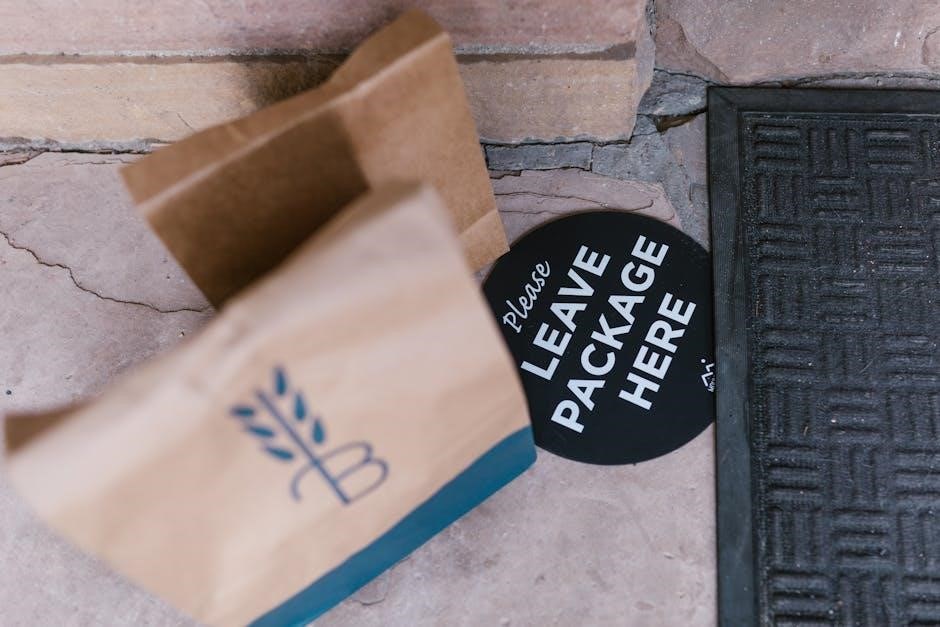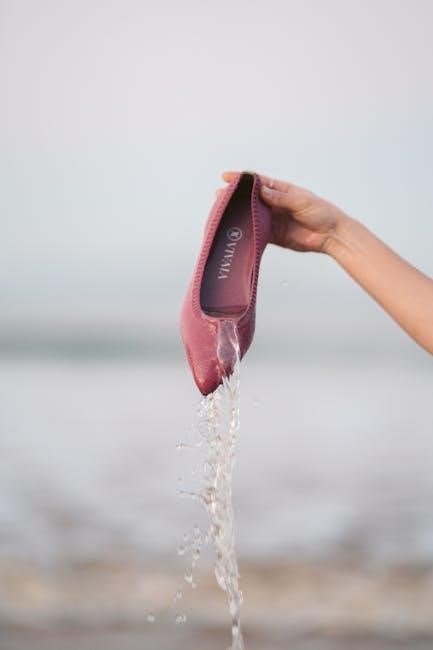The PleurX Drainage System is a minimally invasive medical device designed to remove excess fluid from the chest or abdomen at home. It provides relief from discomfort caused by conditions like pleural effusion or malignant ascites, allowing patients to manage drainage safely and effectively without frequent hospital visits. The system includes a catheter and a vacuum bottle, enabling patients to drain fluid independently, improving quality of life and reducing the need for repeated medical interventions.
Key Points About the PleurX Catheter
The PleurX catheter is a flexible, tunneled drainage tube designed for long-term use in managing pleural effusion or malignant ascites. It is made of silicone and contains natural rubber latex, which may cause allergic reactions in sensitive individuals. The catheter is inserted into the pleural space or abdomen and remains outside the body, allowing patients to drain fluid independently at home. It is compatible with both vacuum bottles and wall suction systems, offering versatility in drainage methods. The catheter features a one-way valve to prevent air entry and a locking mechanism to secure the drainage line, ensuring safe and effective fluid removal.
Purpose of the PleurX Drainage System
The primary purpose of the PleurX Drainage System is to alleviate discomfort and reduce symptoms associated with excess fluid accumulation in the chest or abdomen. It is designed to manage conditions such as pleural effusion and malignant ascites by safely removing fluid. The system enables patients to drain fluid independently at home, improving breathing and reducing pressure in the affected area. This minimally invasive solution enhances quality of life by minimizing the need for frequent medical interventions and allowing patients to manage their condition comfortably in a home setting. Regular drainage helps maintain fluid balance and prevents complications related to fluid retention.
Components of the PleurX Catheter Kit
The PleurX Catheter Kit includes a tunneled catheter with a fenestrated drainage line, a vacuum drainage bottle, and additional accessories. The catheter is designed for long-term use and features a flexible design for patient comfort. The drainage line connects the catheter to the vacuum bottle, which creates suction to remove fluid. The kit also includes a clamp to control fluid flow, a safety clip for secure connections, and a drainage line cap to prevent contamination. Additional supplies, such as dressing change materials and cleaning solutions, are often provided to maintain catheter site hygiene. These components work together to facilitate safe and effective fluid drainage at home.

Preparation for PleurX Drainage
Prepare by gathering supplies, washing hands thoroughly, and removing the old dressing. Ensure a clean environment and follow hygiene practices to prevent infection and ensure safe drainage.
Supplies Needed for the Procedure
To perform the PleurX drainage procedure, you will need the following supplies: the PleurX Drainage Kit, which includes the vacuum bottle, drainage line, and catheter. Additional items include gloves, a mask, chlorhexidine solution for skin preparation, gauze pads, and a dressing to secure the catheter. A measuring cup or scale may be required to monitor fluid drainage. Ensure all supplies are within reach to maintain a sterile environment. Always follow the instructions provided with the kit for specific items and quantities needed. Proper preparation of supplies minimizes complications and ensures a smooth drainage process.
Hand Washing and Hygiene Practices
Proper hand washing and hygiene are crucial before starting the PleurX drainage procedure to prevent infections. Wash your hands thoroughly with soap and warm water for at least 20 seconds, paying attention to the backs of your hands, wrists, and between fingers. Use antibacterial soap if available. Dry your hands completely with a clean towel or let them air dry. Wear gloves to maintain sterility during the procedure. Ensure the area around the catheter is clean and free from contaminants. Avoid touching the catheter or drainage line unnecessarily to reduce the risk of infection. Good hygiene practices are essential for safe and effective drainage.
Removing the Old Dressing
Before proceeding with the drainage, carefully remove the old dressing to access the catheter site. Wash your hands and wear gloves to maintain sterility. Gently peel the dressing from the skin, taking care not to pull on the catheter. If the dressing adheres tightly, use an antimicrobial solution to help loosen it. Once removed, inspect the site for any signs of irritation, redness, or infection. Clean the area with an antimicrobial swab or solution as recommended. Proper removal ensures a clean environment for the new dressing, reducing the risk of complications. Dispose of the old dressing appropriately to maintain hygiene standards.

Drainage Procedure
Connect the drainage bottle to the catheter, ensuring a secure fit. Gently drain fluid into the bottle, monitoring the volume to avoid exceeding recommended limits, then dispose of the bottle properly.
Connecting the Drainage Bottle
Connecting the drainage bottle begins by ensuring the catheter and access tip are clean to prevent contamination. Attach the bottle securely to the catheter, making sure the connection is tight to maintain vacuum pressure. Align the access tip with the bottle’s port and twist gently until it clicks. Verify the connection is secure to avoid leakage. Once connected, the vacuum will automatically begin draining fluid into the bottle. Always follow the manufacturer’s instructions for proper attachment to ensure safe and effective drainage;
Step-by-Step Fluid Drainage Process
Ensure the drainage bottle is securely connected to the catheter. 2. Open the clamp on the drainage line to allow fluid to flow into the bottle. 3. Monitor the fluid level, ensuring not to exceed the recommended limit (1,000 mL for chest, 2,000 mL for abdomen). 4. Once drainage is complete, close the clamp to stop fluid flow. 5. Disconnect the bottle and dispose of it properly. 6. Clean the catheter site with an antiseptic and apply a new dressing. Always follow the manufacturer’s instructions and consult a healthcare provider if issues arise.

Disposal of the Used Drainage Bottle
After draining, carefully disconnect the used drainage bottle from the catheter. Ensure the bottle is tightly sealed to prevent leakage. Place the sealed bottle in a biohazard waste bag or a designated container for medical waste. If no specific facilities are available, wrap the bottle in a leak-proof bag and dispose of it according to local regulations. Always wear gloves and a mask when handling used drainage materials. Wash your hands thoroughly after disposal. Proper disposal prevents infection risks and ensures environmental safety. Follow healthcare provider instructions for specific guidelines, as some facilities may require additional steps for biohazardous waste management.

Post-Drainage Care
After drainage, clean and dress the catheter site to prevent infection. Monitor for signs of complications, such as redness or pain, and contact your healthcare provider if issues arise. Maintain proper hygiene and follow specific care instructions provided by your medical team to ensure the catheter remains functional and infection-free. Regular dressing changes and site inspections are crucial for ongoing patient safety and comfort. Adhere to all post-procedure guidelines to promote healing and avoid potential risks associated with the PleurX system.
Cleaning the Catheter Site
Cleaning the catheter site is essential to prevent infection. Wash your hands thoroughly with soap and water before starting. Use an antiseptic solution, such as chlorhexidine, to clean the area around the catheter. Gently swab in a circular motion, ensuring the site is free from dirt or drainage. Avoid using harsh scrubbing motions that could irritate the skin. Rinse the area with saline solution if needed, and pat it dry with a clean towel. Repeat this process once daily or as instructed by your healthcare provider. If the site appears red, swollen, or painful, contact your doctor immediately to address potential infection risks.
Applying a New Dressing
After cleaning the catheter site, allow the area to air dry completely. Place a sterile dressing over the catheter insertion site to protect it from bacteria and other contaminants. Secure the dressing with medical tape, ensuring it is snug but not overly tight. Make sure the catheter is properly anchored to prevent movement or dislodgment. If using a bio-occlusive dressing, follow the manufacturer’s instructions for application. Change the dressing daily or sooner if it becomes wet, soiled, or loose. Always use sterile supplies to minimize infection risks. If you notice any signs of irritation or redness, contact your healthcare provider for guidance.
Monitoring for Complications
After drainage, monitor the catheter site for signs of infection, such as redness, swelling, or warmth. Watch for fluid leakage or unusual drainage patterns. If pain or discomfort persists, contact your healthcare provider. Be alert to shortness of breath or difficulty breathing, which may indicate re-accumulation of fluid. Check the drainage bottle for unusual colors or odors, as these could signal infection. Track the amount of fluid drained to ensure it does not exceed recommended limits. If you experience fever, chills, or fatigue, seek medical attention promptly. Regular monitoring helps prevent complications and ensures the system functions effectively. Always follow your healthcare provider’s guidelines.

Troubleshooting and Safety Tips
Ensure the catheter and drainage line are secure to prevent dislodgment. Avoid excessive force when handling the catheter to minimize injury risk. Regularly inspect the system for blockages or kinks that may hinder drainage. If the vacuum bottle is not creating suction, check for proper sealing or potential damage. Always follow the recommended drainage limits to avoid complications. Keep the drainage system clean and dry to prevent infections. If issues persist, consult your healthcare provider for assistance. Proper handling and maintenance are crucial for safe and effective use of the PleurX system.
Maximum Fluid Drainage Limits
The PleurX system has specific fluid drainage limits to ensure safety and prevent complications. For pleural effusion, the maximum fluid drainage per session is 1,000 mL, while for malignant ascites, it is 2,000 mL. Exceeding these limits can lead to hypovolemia, hypotension, or other serious issues. Always adhere to these guidelines to avoid potential harm. If more fluid needs to be drained, consult your healthcare provider for further instructions. These limits are in place to protect your health and ensure the procedure remains safe and effective. Follow the FDA-cleared instructions carefully to maintain proper drainage and avoid complications.
Handling the Catheter and Drainage Line
Proper handling of the PleurX catheter and drainage line is crucial to prevent infections and maintain functionality. Always keep the catheter and access tip clean using an antiseptic solution. Avoid touching the catheter insertion site unnecessarily to reduce the risk of contamination; When connecting the drainage line to the bottle, ensure it is securely locked to prevent leaks. Do not kink or bend the line excessively, as this may obstruct fluid flow. Regularly inspect the line for any signs of damage or wear. If any issues are detected, contact your healthcare provider immediately for assistance. Proper handling ensures safe and effective drainage.

Frequently Asked Questions
- What is the maximum amount of fluid I can drain at one time?
- How should I clean the catheter site to prevent infection?
- When should I contact my healthcare provider?
Common Questions About the PleurX System
Patients often ask about the safety and ease of using the PleurX system at home. Many inquire about the maximum fluid drainage limits, with guidelines advising not to drain more than 1,000 mL from the chest or 2,000 mL from the abdomen in one session. Others seek clarification on handling the catheter and drainage line to avoid complications. Additionally, questions arise about proper hygiene practices, such as washing hands and cleaning the catheter site with antiseptic solutions to prevent infections. These concerns highlight the importance of following the provided instructions carefully to ensure safe and effective use of the PleurX system.
Risks and Benefits of the Procedure

The PleurX Drainage System offers significant benefits, including relief from discomfort caused by excess fluid and reduced need for hospital visits. However, risks include potential allergic reactions to the latex in the catheter and infection if proper hygiene practices are not followed. Patients must adhere to guidelines, such as not draining more than 1,000 mL from the chest or 2,000 mL from the abdomen in one session, to minimize complications. While the system is designed for safe home use, improper handling of the catheter or drainage line can lead to issues. Balancing these factors, the PleurX system provides effective fluid management for many patients.

Resources for Further Guidance
Access instructional videos, PDF manuals, and patient guides on the manufacturer’s website or trusted medical sites for detailed PleurX drainage instructions and troubleshooting tips.
Instructional Videos and Manuals
Instructional videos and detailed manuals are available online to guide patients and caregivers through the PleurX drainage process. These resources provide step-by-step instructions for connecting the drainage bottle, draining fluid, and disposing of used materials.
Videos demonstrate proper technique, while manuals include diagrams and troubleshooting tips. Visit the manufacturer’s website or trusted medical sites for access to these materials, ensuring safe and effective use of the PleurX system at home.